Jean-louis Dessalles - Publications [See all papers] - [Selected Papers] - [Talks]
See also Books:
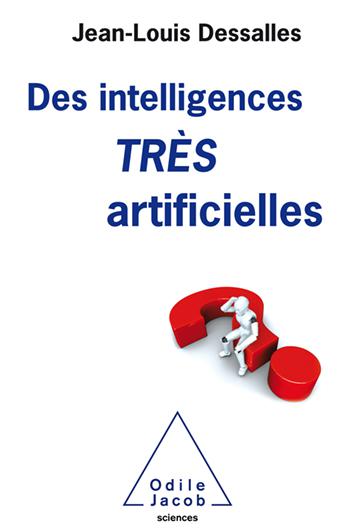
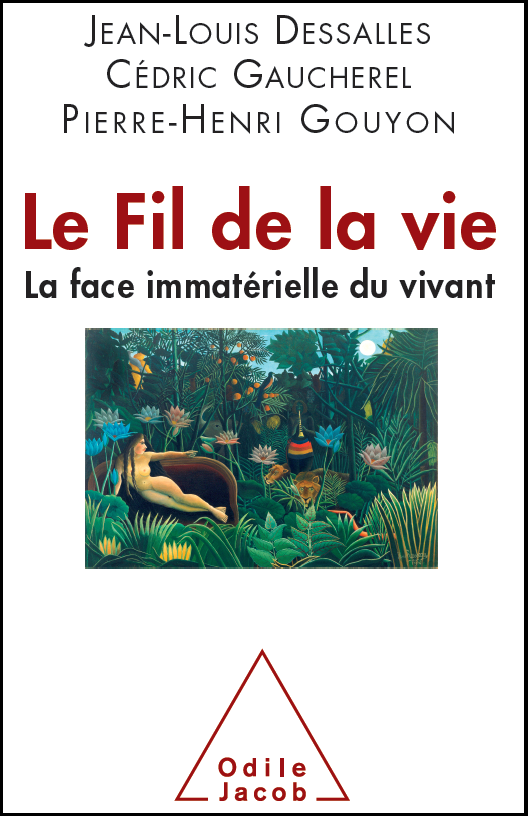
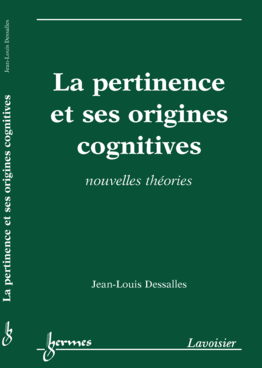
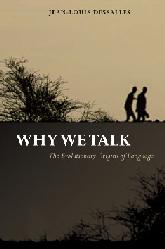
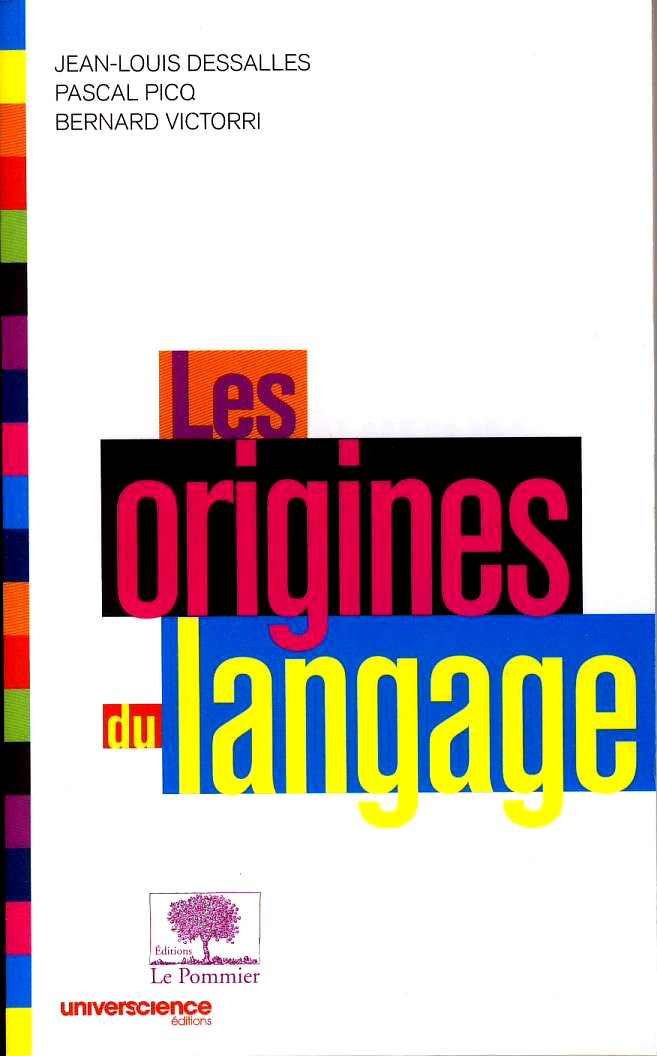
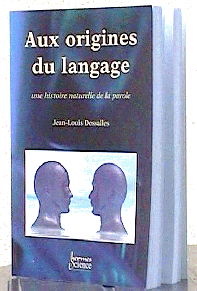
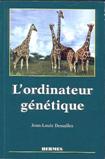
 Topics
Topics
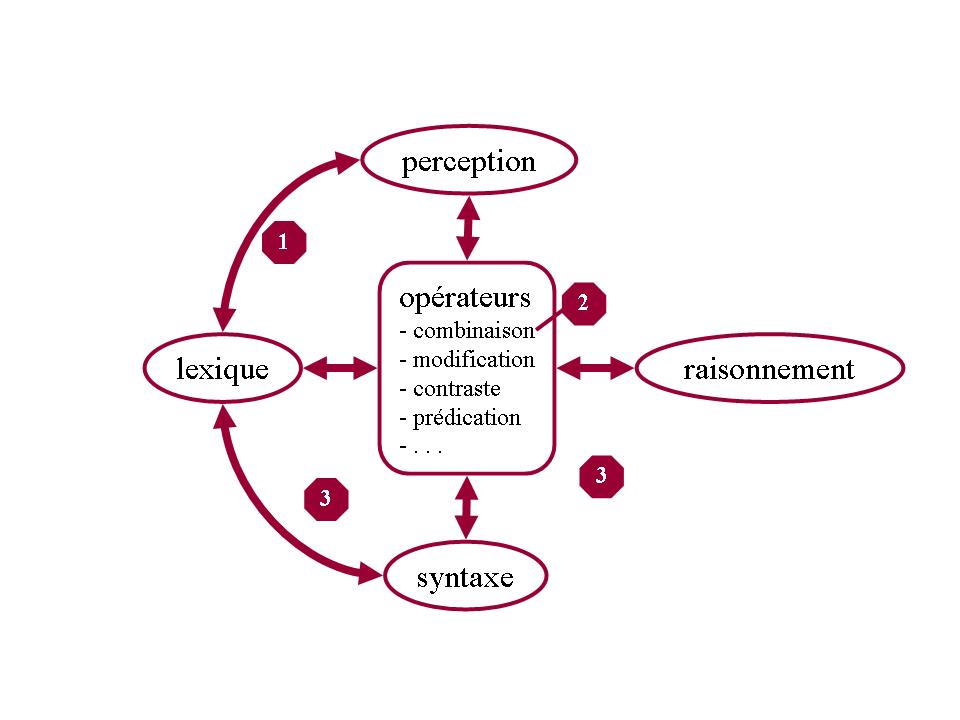 Social signals
Social signals
Evolutionary origins of language
Evolution and information
Simplicity Theory
Cognitive modelling of interest
Cognitive modelling of relevance
Cognitive modelling of meaning
Cognitive modelling of emotional intensity
Cognitive modelling of concept learning
Emergence as complexity drop
Qualia cannot be epiphenomenal
→ [ See all papers ] → [ Selected papers ]
Selected topic: Cognitive modelling of meaning
| We reject the idea that concepts are permanent representations (ontologies). However, we stick to the idea that symbolic structures are necessary to interpret combinatorial and logical phenomena observed in language and in reasoning. Our solution is a procedure through which conceptual representations are formed on the fly. Our model is based on the assumption of a contrast operator which allows topological relations to operate on perceptual representations, giving birth to transitory symbolic representations. |
Watch

|
See also the video of my talk at COST 2016
How concepts differ from predicates |
My 20 papers about MEANING (but see my other papers)
-
Sileno, G., Bloch, I., Atif, J. & Dessalles, J.-L. (2018). Computing Contrast on Conceptual Spaces. 6th International Workshop on Artificial Intelligence and Cognition (AIC 2018), 11-25. CEUR Workshop Proceedings.
Keywords: MEANING
This paper provides an updated formalization of the operation of contrast, and shows that, by applying it on conceptual spaces, membership functions to categories as e.g. those captured by adjectives or directional relationships emerge as a natural by-product. Because the outcome of contrast depends not only on the objects contrasted (a target and a reference, as for instance a prototype), but also on the frame in which those are contained, it is argued that contrast enables a continuous contextualization, offering a basis for "on the fly" predication. This investigation is used for inferring general requirements for the application of contrast and its generalization, and for comparison with current practices in the conceptual space literature.
→ Download PDF Share: -
Sileno, G., Bloch, I., Atif, J. & Dessalles, J.-L. (2017). Similarity and contrast on conceptual spaces for pertinent description generation. In G. Kern-Isberner, J. Fürnkranz & M. Thimm (Eds.), KI 2017: Advances in Artificial Intelligence - LNAI 10505, 262-275. Cham, CH: Springer.
Keywords: MEANING
Within the general objective of conceiving a cognitive architecture for image interpretation able to generate outputs relevant to several target user profiles, the paper elaborates on a set of operations that should be provided by a cognitive space to guarantee the generation of relevant descriptions. First, it attempts to define a working definition of contrast operation. Then, revisiting well-known results in cognitive studies, it sketches a definition of similarity based on contrast, distinguished from the metric defined on the conceptual space.
→ Download PDF Share: -
Dessalles, J.-L. (2016). How concepts differ from predicates. Cognitive Structures 2016 - Linguistic, philosophical and psychological perspectives, 36-38. Düsseldorf, D: Heinrich-Heine-Universität.
Keywords: MEANING
Considering concepts as mental representations, should we regard them as perceptual prototypes or rather as symbolic entities?
→ Download PDF Share:
→ Video of the talk -
Dessalles, J.-L. (2016). L’émergence du sens au cours de l’évolution. Langages, 201, 129-142.
Keywords: MEANING
Pour Darwin, les facultés mentales de l’être humain diffèrent de celles des autres animaux par leur degré et non par leur nature. Pourtant, l’analyse des compétences cognitives humaines révèle certaines opérations qui ne prennent leur sens que par rapport au langage. Par exemple, les mécanismes qui nous permettent de combiner les significations ou de former des prédicats sont essentiels pour raconter ou pour argumenter. En revanche, ils n’ont pas de rôle comportemental évident. Il est alors tentant de penser que ces mécanismes cognitifs sont propres à notre espèce et qu’ils sont apparus dans un ordre défini au cours de la phylogenèse, pour remplir des fonctions langagières particulières.
→ Get a PDF version of this paper.
-
Dessalles, J.-L. (2015). From conceptual spaces to predicates. In F. Zenker & P. Gärdenfors (Eds.), Applications of conceptual spaces: The case for geometric knowledge representation, 17-31. Dordrecht: Springer.
Keywords: MEANING
Why is a red face not really red? How do we decide that this book is a textbook or not? Conceptual spaces provide the medium on which these computations are performed, but an additional operation is needed: Contrast.
→ Download PDF Share: -
Munch, D. & Dessalles, J.-L. (2014). Assessing Parsimony in Models of Aspect. In P. Bello, M. Guarini, M. McShane & B. Scassellati (Eds.), Proceedings of the 36th Annual Conference of the Cognitive Science Society, 2121-2126. Austin, TX: Cognitive Science Society.
Keywords: MEANING
Though human beings are experts in the determination of aspectual relations, current models of Aspect lack principled parsimony. We show that even on a limited segment of language, determining aspectual interpretations seems to require much ad hoc information. Our suggestion is to give parsimony first priority. The model we present in this paper is limited in scope, but its complexity is bounded in principle.
→ Download PDF Share:
→ Slides -
Dessalles, J.-L. (2013). Du protolangage au langage : modèle d’une transition. In B. Fracchiolla (Ed.), Les origines du langage et des langues Paris: L’Harmattan.
Keywords: EVOL.&LANG. MEANING
L’existence des capacités syntaxiques qui permettent aux êtres humains de manier des langues complexes reste mystérieuse. Pour certains auteurs, ces capacités seraient apparues totalement par hasard au cours de l’évolution et leur application à la communication serait fortuite. Nous essayons ici de montrer comment la modélisation de l’interface syntaxe-sémantique permet d’envisager un tout autre scénario. L’aptitude à manier des structures syntaxiques serait apparue en deux temps et serait liée à une nouvelle capacité sémantique, la formation des prédicats. La récursivité serait apparue lors de la deuxième étape, comme un moyen de lier les prédicats entre eux pour permettre la détermination de leurs arguments.
→ Télécharger une version PDF de cet article Share: -
Munch, D. & Dessalles, J.-L. (2012). Inferring aspectuality on French sentences: a minimalist approach. In N. Miyake, D. Peebles & R. Cooper (Eds.), Proceedings of the 34th Annual Conference of the Cognitive Science Society, 2055-2060. Austin, TX: Cognitive Science Society.
Keywords: MEANING
Current models of temporality in language are either inaccurate or too complex to be cognitively plausible. We present a cognitive model of the computation of aspect in French. Our approach emphasizes the importance of minimalism for cognitive plausibility: structures and computation are kept simple and combinatorial explosion is avoided. Though the model and its current implementation remain partial for now, our approach opens the way to a generic and cognitively plausible method for the determination of aspect.
→ Download PDF Share: -
Munch, D. & Dessalles, J.-L. (2011). Vers un modèle minimaliste du traitement des relations temporelles. Modèles formels de l’interaction (MFI-11) - Actes des sixièmes journées francophones Rouen: .
Keywords: MEANING
Nous proposons l’esquisse d’un modèle de calcul des relations temporelles dans le langage. Ce modèle cherche à satisfaire une contrainte de minimalisme cognitif, de manière à assurer une économie dans le calcul, dans la mémoire et dans les structures lors de l’analyse des informations temporelles contenues dans les énoncés. L’objectif est, à terme, de parvenir à une méthode générique et cognitivement plausible pour la détermination du temps, de l’aspect et de leurs implications logiques. L’originalité de ce modèle est d’isoler les opérations topologiques des autres traitements sémantiques. -
Dessalles, J.-L. & Ghadakpour, L. (2005). Semantic abilities evolved as well - Electronic commentary on M. Arbib: "From monkey-like action recognition to human language". Behavioral and Brain Sciences, 28 (2).
Keywords: MEANING
The evolutionary story proposed in the target paper makes no difference between semantic representations underlying language and more general cognitive representations, at work in perception and action, which humans share with apes and probably other mammals. Though semantic representations supporting language are grounded in perception, some of them, specifically predicative structures, should rather be considered a distinctive feature of human communication system. Any evolutionary scenario about language should explain how human minds evolved to form the kind of thoughts that are communicated through language.
→ Download PDF Share: -
Ghadakpour, L. & Dessalles, J.-L. (2004). Conceptual interface. Abstracts of the Conference ‘Architecture of the Language Faculty, 12. London: University College of London.
Keywords: MEANING
→ Download PDF Share: -
Ghadakpour, L. & Dessalles, J.-L. (2004). Contrast predication and evolution. Abstracts of the International Conference on Language, Culture and Mind, 26. Portsmouth: University of Portsmouth.
Keywords: MEANING
→ Download PDF Share: -
Ghadakpour, L. & Dessalles, J.-L. (2004). Transient concepts and compositionality. Abstracts of the Interdisciplinary Conference ‘New Aspects of Compositionality, 2. Paris: ENS et Université Paris-Sorbonne.
Keywords: MEANING
People put words together, often in an innovative way, to create genuine new meanings. According to the compositionality principle, the meaning of an expression is entirely deducible from the meanings of its components. The principle alone does not, however, tell how composed meanings are formed. Most attempts to solve the compositionality problem led authors to assign fixed conceptual structures to words.,We suggest another solution. In our model, conceptual representations are ephemeral. They are constructed “on the fly” and they do not survive the context that gave birth to them.
→ Download PDF Share: -
Dessalles, J.-L. & Ghadakpour, L. (2004). La construction cognitive du temps. In D. Badariotti (Ed.), Le temps dans les systèmes complexes naturels et artificiels - Actes des journées de Rochebrune, 95-109. Paris: ENST 2004-S-001.
Keywords: MEANING
Les êtres humains parviennent à communiquer et à argumenter en tenant compte, avec une aisance spectaculaire, des relations temporelles entre les situations. Pourtant, la plupart des modèles du temps échouent à donner une explication cognitivement plausible de cette performance. L’une des difficultés principales des modèles existants est qu’ils utilisent des ensembles infinis d’instants ou d’intervalles, ce qui est irréaliste du point de vue de la modélisation cognitive. Le modèle que nous esquissons ici propose une approche non-réaliste de la construction cognitive du temps. Il parvient à éviter l’écueil des ontologies temporelles infinies, au prix d’un changement radical dans la manière de considérer la conceptualisation du temps.
→ Télécharger une version PDF de cet article Share: -
Ghadakpour, L. & Dessalles, J.-L. (2003). Modèle procédural du repérage temporel. In B. Chaib-Draa & A. Herzig (Eds.), Actes des journées francophones ‘Modèles formels de l’interaction’ (MFI-03), 267-270. Toulouse: Cépaduès Editions.
Keywords: MEANING
Les modèles de l’interaction rencontrent un certain nombre de contraintes, comme éviter de postuler des structures ou des procédures qui ne pourraient pas être hébergées par un cerveau humain ou un dispositif matériel. En particulier, un modèle de l’interaction doit renoncer à toute structure ou procédure infinie. Dans ce papier, nous montrons comment la prise en compte de cette contrainte nous amène à proposer, dans le cas particulier du temps, un modèle qui renonce à certains présupposés classiques, notamment l’existence d’une structure temporelle globale. L’abandon de cette hypothèse nous conduit à adopter une approche procédurale de la construction des relations temporelles. Le cas du temps est proposé comme un exemple montrant qu’il est possible de rapprocher les modèles formels de la performance humaine qu’ils sont censés expliquer.
→ Télécharger une version PDF de cet article Share: -
Dessalles, J.-L. & Ghadakpour, L. (2003). Object recognition is not predication - Commentary on James R. Hurford: "The neural basis of predicate-argument structure". Behavioral and Brain Sciences, 26 (3), 290-291.
Keywords: MEANING
Predicates involved in language and reasoning are claimed to radically differ from categories applied to objects. Human predicates are the cognitive result of a contrast between perceived objects. Object recognition alone cannot generate such operations as modification and explicit negation. The mechanism studied by Hurford constitutes at best an evolutionary prerequisite of human predication ability.
→ Download PDF Share: -
Hurford, J. R. & Dessalles, J.-L. (2002). The problematic transition from specific competences to general competence - Commentary on Peter Carruthers: "The cognitive functions of language". Behavioral and Brain Sciences, 25 (6), 690-691.
Keywords: EVOL.&LANG. MEANING
Postulating a variety of mutually isolated thought domains for pre-linguistic creatures is both unparsimonious and implausible, requiring unexplained parallel evolution of each separate module. Furthermore, the proposal that domain-general concepts are not accessible without prior exposure to phonetically realized human language utterances cannot be implemented by any concept-acquisition mechanism.
→ Download PDF Share: -
Ghadakpour, L. & Dessalles, J.-L. (2002). Cognitive requirements for the expression of time. Abstracts of the International Conference on the Evolution of Language, 47. Cambridge, MA: University of Harvard.
Keywords: MEANING -
Ghadakpour, L. & Dessalles, J.-L. (2001). Potential and actual infinite in cognitive models of time. Paris: Technical Report ENST 2001-D-004.
Keywords: MEANING
→ Download PDF Share: -
Ghadakpour, L. & Dessalles, J.-L. (2000). Le réalisme temporel face à Zénon. Temps et sciences cognitives - Actes des journées du Réseau de Sciences Cognitives d’Ile-de-France, 26. Paris: RISC.
Keywords: MEANING
→ Télécharger une version PDF de cet article Share: